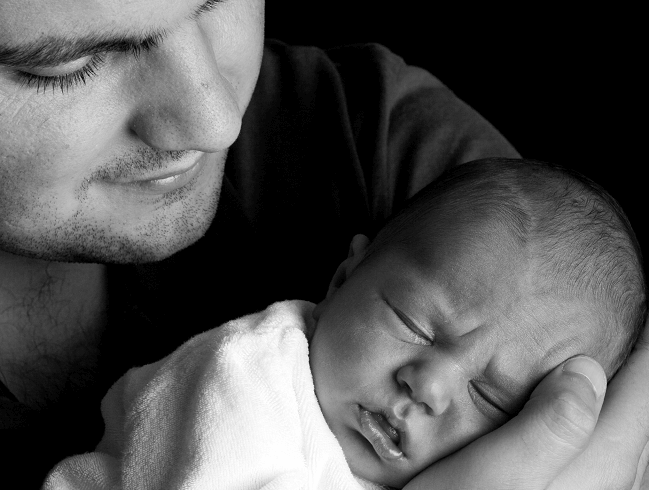Assisted reproduction has undergone enormous technological advances in recent years. Issues like the genetic editing of embryos or the anonymity of gamete donations are highly topical these days, and professionals hold conferences, meetings, seminars, etc., where leading experts present their views.
In most cases, these professionals address technical issues, where the fundamental question is “how”: which diagnostic techniques are best suited for each patient (“personalized medicine” is very popular right now), how to carry out treatments, and how, in short, to achieve pregnancy. At best, the questions are legal in nature: is it allowed? But we rarely ask ourselves whether it “should be”. And this is what ethics is all about: building values, or, in other words, duties.
As professionals, we tend to focus on our means, because they are what we manage and because we want to know how conflicts raised by new techni ques can be solved, but we are less concerned about the ends. And let’s not forget that the ultimate goal is not just to achieve gestation, but to obtain a healthy child. The actions of reproductive medicine professionals focus on one aspect that many people are especially sensitive about: their desire to reproduce. Exceedingly high expectations fueled by technological advances, the uncertainty of results, the openness to medicine for the sake of satisfying desires, etc., may give rise to tensions that require in-depth analysis.
On the other hand, the doctor-patient relationship, or the relationship between the reproductive professional and the patient, the so-called clinical relationship, is transforming, as a result of a number of dynamic factors that have emerged in recent times and which present it in a different light. Until not so long ago, a clinical relationship revolved around the doctor as the central figure. This relationship was based on the idea that the doctor, as the one responsible for curing patients’ ailments, worked from a place of professional knowledge, which placed them in a position of superiority when making decisions in the pursuit of their patients’ well-being. However, in recent years, we have added to the principle of “do no harm”, as set forth by the Hippocratic oath and later translated into ethical standards, the principle of autonomy as a key component to understand the doctor-patient relationship.

The clinical relationship has been transformed in such a way that there has to be a flow of information from the medical team to the patient, who will ultimately make the decisions. In this relationship, there are therefore two moral agents: the medical team and the patient. Both sides, through dialogue and exchange of ideas and information, agree on the use of a medical technique for a specific purpose. But in reproductive medicine, this is more complex, as another moral agent intervenes, perhaps the most important of all: the future child.
And this is where conflict may be found if we limit ourselves to being “principlists”, that is, to base our decisions only on the four principles. It may occur that some ethical principles involved in assisted reproduction may be at odds with each other. The principle of doing no harm compels professionals to maximize patient care over potential harm. In the context of prenatal ethics, a professional has a clear duty to care for both mother and future child, when the child is presented as a patient. The principle of autonomy compels the professional to respect the patient’s right to self-determination, guided by their desires, preferences, and values.
Principle-based theory is widespread among health and biomedical research professionals and is being applied to inform any of the conflicting areas in the clinical relationship. It originated when the United States Congress created a National Commission responsible for identifying the basic ethical principles that should guide human research in behavioral sciences and biomedicine (1974). In 1978, as the final result of four years of work, the members of the committee produced the document known as the Belmont Report, which contained the three principles: autonomy or respect for people, for their opinions and choices; beneficence, or the obligation to do no harm and maximize benefits and minimize risks; and justice or impartiality in the distribution of risks and benefits.
However, the canonical expression of the principles is found in the book written in 1979 by Beauchamp and Childress; the former had been a member of the Commission. It accepted the three principles of the Belmont report, which they now called autonomy, beneficence, and justice, but they added a fourth, the principle of non-maleficence, giving them all a sufficiently broad definition so that they may govern not only in experimentation with humans, but also in clinical practice and care. The first level (the one comprised by the principles of non-maleficence and justice) refers to what’s right or wrong, while the second level (the principles of autonomy and beneficence) refers to what’s good or bad.
If a person needs assisted reproduction to have a child, this necessarily implies that a professional will have a hand in what may result in offspring. As a result, professionals must exercise their moral responsibility to decide whether to agree or refuse to use such techniques. The issue of potential harm to offspring raises questions about the moral role of the professional. In this case, the doctor’s autonomy clashes head-on with the patient’s autonomy. Beneficence based on obligation therefore requires professionals to recognize the limits of the patient’s autonomy when they request medically inappropriate techniques that may jeopardize their health and that of potential children. Therefore, it is also necessary to take into account the set of values that are implicated in each case.
It would be naive, therefore, to think that with a set of principles all ethical problems can be solved. Principles must be, by definition, general, and ethical issues are specific, particular. Clinical ethics was not in vain born as a discipline meant to solve specific situations, and it therefore becomes a decision-making procedure.
Never before have so many complex ethical issues been posed to medical professionals, and even more so in assisted reproduction. This is why responsible and prudent action is needed, based on values and not only on codes of ethics and legal norms.
In the words of Diego Gracia, one of the world’s leading proponents of bioethics:
The answer has to be given at two levels, at the public level or the ethics of minimums, and at the private level of ethics of maximums. These are the two levels of every person’s moral life and therefore also the two levels of professional ethics.
Diego Garcia




